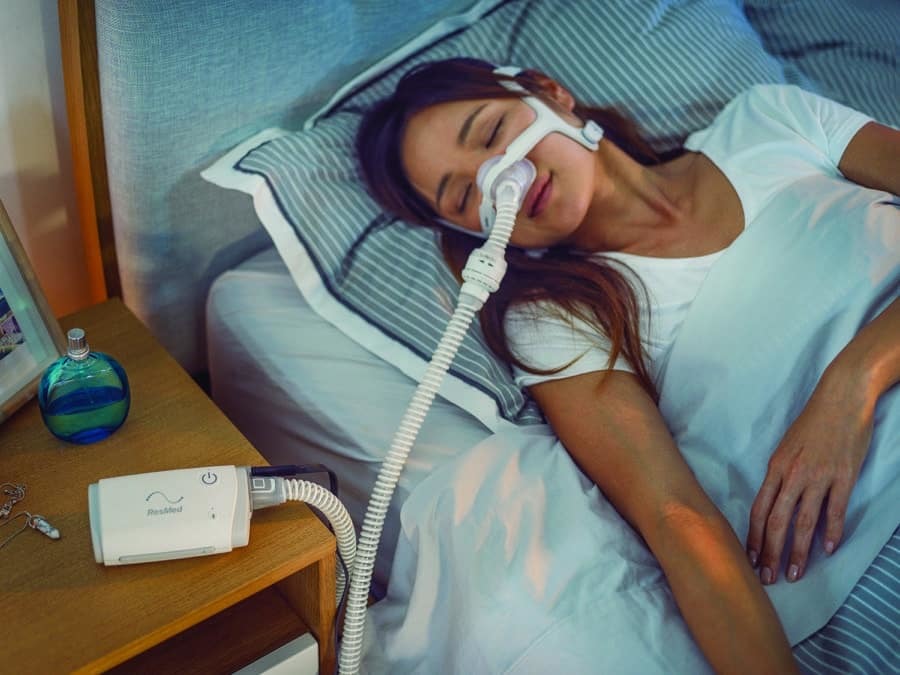How a Rest Study Can Transform Your Rest Patterns: Insights and Services Available
A rest research study offers as an important device for individuals looking for to understand and improve their rest patterns. It offers a thorough evaluation of rest behaviors and potential disorders. By reviewing different metrics, health care professionals can recognize underlying concerns that interfere with corrective remainder. This procedure not just help in medical diagnosis however additionally sets the phase for tailored treatment plans. What understandings might a sleep research disclose regarding your very own sleep practices?
Comprehending Sleep Studies: What to Anticipate
When individuals plan for a rest study, they commonly question what the experience will certainly entail. These studies, commonly conducted in a rest clinic, objective to keep track of numerous physical criteria throughout sleep. Upon arrival, individuals are welcomed by experienced specialists who guide them through the procedure. The environment is created to be comfy, enabling an all-natural rest experience. Individuals may be asked to fill in questionnaires concerning their sleep habits and case history, which helps in the assessment.
As the evening advances, sensing units are affixed to the body to track brain waves, heart rate, and breathing patterns. While the setup may really feel uncommon, the objective is to collect accurate information on the person's sleep patterns. The entire procedure is non-invasive and postures no risk to the individual. Eventually, the information gathered throughout the rest research is important for identifying possible sleep problems and establishing reliable treatment plans.
Typical Rest Disorders Identified Through Sleep Studies
Rest researches play a vital role in identifying various rest conditions that can greatly influence an individual's health and wellness and wellness. Common problems detected via these researches include obstructive rest apnea, characterized by repeated disruptions in breathing throughout rest, bring about fragmented sleep patterns. Another common problem is sleeping disorders, which includes trouble dropping or staying asleep, typically resulting in daytime fatigue and impaired performance. Troubled legs syndrome (RLS) is likewise often observed, triggering uncomfortable feelings in the legs and an uncontrollable urge to relocate them in the evening. Narcolepsy, a neurological problem that affects sleep-wake cycles, is another severe condition determined in sleep research studies, leading to extreme daytime drowsiness and sudden sleep assaults. Finally, parasomnias, which encompass irregular actions during rest, such as sleepwalking or night fears, are also kept in mind. Early identification of these disorders can assist in prompt intervention and boost general rest high quality.
The Refine of a Sleep Research Study: From Preparation to Outcomes
The procedure of a rest research may seem daunting, it is a structured and systematic strategy made to collect necessary information concerning an individual's rest patterns. A medical care provider carries out a thorough examination, talking about rest history and signs with the person. This assessment aids identify the details focus of the study.
Preparation generally includes standards on rest hygiene and medicine modifications prior to the research. Individuals might be advised to avoid high levels of caffeine and alcohol to guarantee precise outcomes. On the evening of the study, sensing units and electrodes are placed to monitor mind activity, heart price, breathing, and motions throughout rest.
The information gathered is diligently assessed by sleep professionals, who recognize any irregularities or patterns a measure of sleep disorders. Following this analysis, a follow-up consultation is prepared to go over the searchings for and potential treatment choices tailored to the patient's requirements, promoting improved sleep high quality.

Kinds of Rest Studies: In-Lab vs. Home Sleep Examinations
Two main kinds of sleep research studies exist: in-lab studies and home rest examinations, each accommodating various requirements and conditions. In-lab research studies usually happen in a sleep center where individuals are kept track of over night by medical care specialists. This technique permits for comprehensive data collection on different rest specifications, such as brain task, oxygen degrees, and heart rate. People are commonly linked to multiple sensing units, giving comprehensive understandings right into their rest problems, consisting of rest apnea and narcolepsy.
On the other hand, home rest examinations supply an easier option for people that like to carry out analyses in their own setting. These mobile gadgets monitor essential metrics like air flow, oxygen saturation, and snoring. While home tests are less extensive than in-lab research studies, they function as a functional service for detecting common sleep disorders. Eventually, the option between these 2 types of sleep researches depends on specific preferences, medical demands, and the intensity of sleep-related concerns.
Interpreting Your Sleep Research Outcomes: Trick Metrics Discussed
Recognizing the outcomes of a rest research study is necessary for clients seeking insights into their sleep health. Trick metrics generally assessed in sleep research studies include the Apnea-Hypopnea Index (AHI), which determines the variety of apneas and hypopneas per hour of rest. AHI worths assist determine the extent of sleep apnea, with higher ratings suggesting more considerable issues. One more crucial metric is the overall bedtime (TST), which shows the general duration of sleep throughout the research study. Rest performance, the proportion of time spent asleep to time invested in bed, is also important; higher percents suggest much better sleep quality. Furthermore, the percent of rest spent in different stages-- light, deep, and REM-- offers insights into rest architecture. Comprehending these metrics gears up individuals with the knowledge required to discuss their rest patterns with doctor, leading the way for informed decisions concerning their sleep health and wellness.
Therapy Choices and Suggestions Based Upon Your Rest Research
When a rest research discloses issues such as sleep apnea or other rest problems, different treatment alternatives and referrals end up being readily available to boost total rest health. For obstructive rest apnea, continual favorable respiratory tract pressure (CPAP) treatment is typically recommended, offering a steady stream of air to keep airways open during rest. Additionally, oral appliances may be advised for mild to modest situations, rearranging the jaw to stop air passage obstruction.
In instances of sleep problems, cognitive behavioral treatment for sleep problems (CBT-I) is typically suggested, focusing on behavioral adjustments and assumed patterns that disrupt sleep. In addition, lifestyle modifications such as weight management, routine exercise, and avoiding alcohol or high levels of caffeine prior to going to bed might boost rest top quality.
,aspect=fit)
Building Healthy And Balanced Sleep Habits: Tips for Better Rest
Structure view publisher site healthy sleep practices is necessary for accomplishing restorative remainder. Developing a consistent sleep regimen, limiting screen time before bed, and developing a comfy sleep setting can greatly boost rest top quality. These approaches function as foundational steps for people seeking better rest end results.
Establish a Sleep Regimen
Establishing a constant sleep regimen is necessary for promoting healthy rest routines and enhancing overall wellness. Sleep Study Bangalore. A regular sleep routine, where people go to sleep and awaken at the very same time each day, strengthens the body's natural body clocks. This predictability assists manage the sleep-wake cycle, causing boosted rest high quality. Developing a calming pre-sleep ritual, such as analysis or exercising relaxation methods, can signify the body that it is time to relax. Furthermore, maximizing the rest setting-- by keeping a comfortable temperature level, decreasing sound, and making sure darkness-- can additionally sustain restful rest. By focusing on these methods, individuals can cultivate a sustainable rest routine that fosters corrective sleep and adds to much better mental and physical health and wellness
Limit Screen Time
As individuals progressively rely upon screens for amusement and interaction, restricting screen time prior to bed has become important for promoting far better rest. Study suggests that exposure to blue light discharged by devices such as computer systems, smart devices, and tablet computers can hinder the manufacturing of melatonin, the hormonal agent in charge of regulating rest. Experts advise turning off screens at least one hour before going to bed to improve sleep quality. Involving in different tasks, such as practicing or checking out a publication leisure methods, can assist people relax and prepare for rest. By consciously reducing screen time, individuals can grow healthier rest patterns, resulting in boosted general well-being and enhanced daytime alertness. Prioritizing this aspect of sleep health is essential for long-lasting health and wellness.
Create a Rest Refuge
Producing a rest sanctuary can significantly improve a person's capability to achieve peaceful sleep. This setting must focus on comfort and serenity, incorporating components that advertise address leisure. An appropriate cushion and pillows are crucial, as they straight effect rest quality. Additionally, the space ought to be dark, silent, and cool; utilizing blackout drapes and white sound devices can promote this environment. Customizing the area with soothing colors and aromas, such as lavender, can even more improve relaxation. Minimizing mess likewise adds to a calm setting, enabling psychological quality - Sleep Study Bangalore. By attentively developing a sleep shelter, people can cultivate much healthier sleep practices and develop a constant regimen, inevitably bring about boosted overall well-being and corrective remainder
Regularly Asked Inquiries
Just how Lengthy Does It Take to See Improvements After a Sleep Research study?
Improvements after a rest study can differ, however many individuals begin to observe positive adjustments within a couple of weeks. Consistent follow-up and adherence to advised therapies play necessary duties in accomplishing optimal outcomes.

Can Kid Undergo Rest Studies, and Exactly How Are They Various?
Yes, kids can go through rest studies, which differ from grown-up studies in keeping track of methods and equipment. Pediatric analyses typically involve child-friendly atmospheres and might consist check my reference of parent involvement to ensure comfort and accurate results.
Are Rest Studies Covered by Insurance, and What Are the Prices?
Sleep research studies can be covered by insurance policy, depending upon the policy and medical necessity. Expenses vary commonly, ranging from $300 to $3,000, influenced by the kind of study and place of the center.
What Way Of Life Changes Can Boost the Efficiency of Rest Research Study Outcomes?

Applying consistent sleep timetables, decreasing high levels of caffeine consumption, developing a relaxing bedtime regimen, and preserving a comfortable rest atmosphere can substantially boost the performance of rest research results, promoting much better sleep top quality and overall health and wellness.
Exactly how Frequently Should I Repeat a Rest Study for Ongoing Issues?
Individuals experiencing continuous sleep concerns should think about duplicating a rest study every one to 2 years, or as advised by health care specialists, to keep track of modifications and readjust therapy strategies successfully based on their evolving rest patterns. (Sleep Study Bangalore)
Rest researches play an important duty in determining different rest conditions that can substantially influence an individual's health and wellness. Common conditions spotted through these studies include obstructive sleep apnea, identified by repeated disruptions in breathing during rest, leading to fragmented rest patterns. When a sleep research study discloses issues such as rest apnea or various other sleep problems, different therapy alternatives and referrals come to be offered to boost total rest wellness. Developing a regular sleep routine, restricting screen time before bed, and developing a comfortable rest environment can greatly boost sleep top quality. In addition, optimizing the sleep environment-- by keeping a comfortable temperature, minimizing noise, and guaranteeing darkness-- can further support relaxing rest.